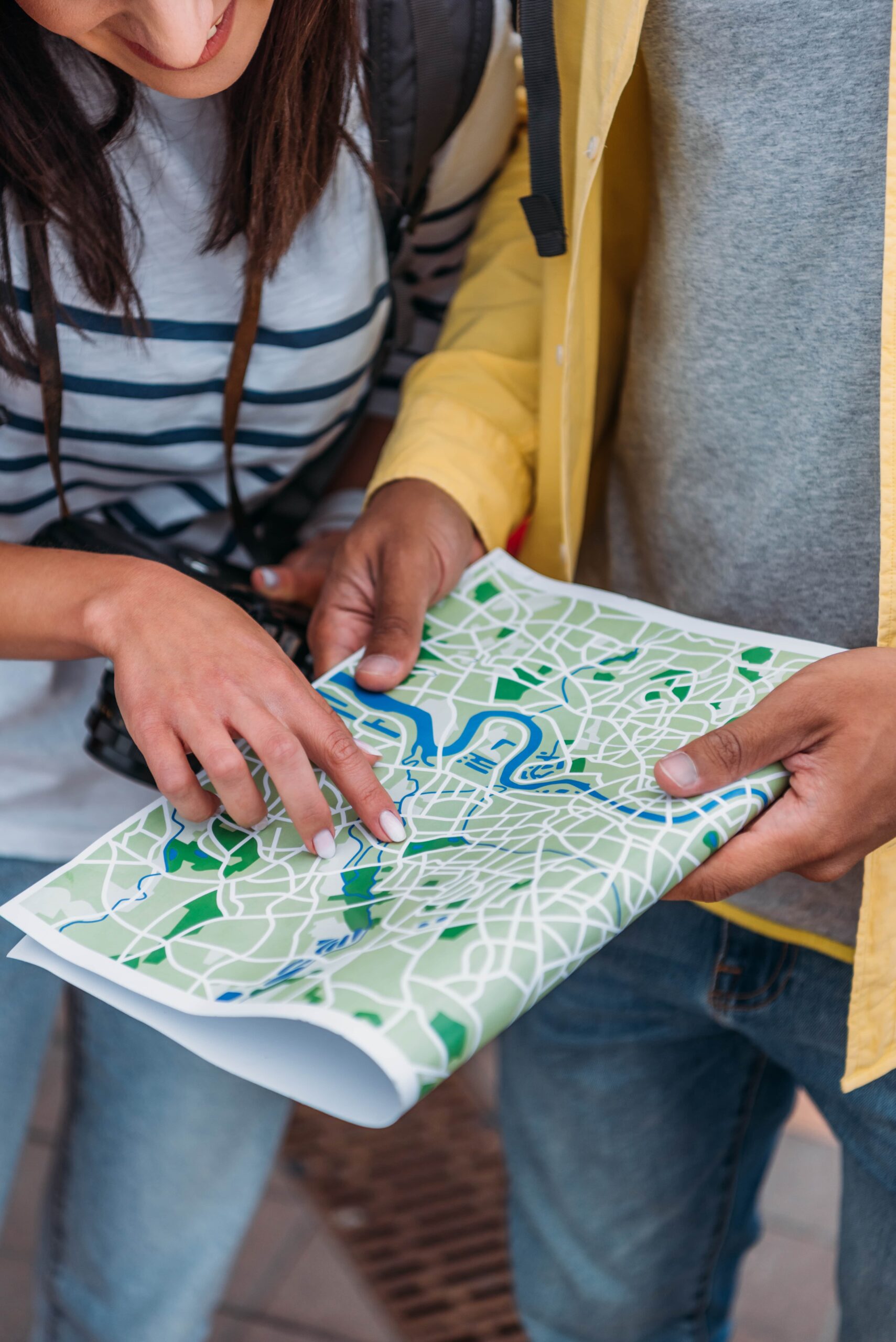Introduction
When embarking on a new adventure, understanding how to effectively use tourist maps is crucial for a smooth and enjoyable experience. Tourist maps are more than just tools for finding your way; they are gateways to discovering hidden gems and making the most of your trip. In this article, we’ll provide essential tourist map tips that will help you navigate with confidence, uncover off-the-beaten-path attractions, and make your travel experience memorable. Whether you’re exploring a bustling city or venturing into the great outdoors, mastering these map tips will enhance your journey.
1. Familiarize Yourself with Map Features
Before you set out, it’s important to understand the various features and symbols on your tourist map. This knowledge will help you navigate more efficiently and make the most of your adventure.
Key Features to Know:
- Legend and Symbols: The map’s legend provides explanations for symbols and color codes, such as landmarks, public facilities, and transportation routes. Review this section to understand what each symbol represents.
- Scale and Distance: The scale indicates the relationship between distances on the map and real-world distances. This helps you estimate travel times and plan your routes more accurately.
- Orientation: Maps are typically oriented with north at the top. Familiarize yourself with the compass rose or orientation indicator to ensure you’re reading the map correctly.
2. Plan Your Route Strategically
Strategic planning is essential for making the most of your time and resources. By planning your route, you can efficiently navigate tourist maps and maximize your exploration.
Route Planning Tips:
- Prioritize Destinations: Identify your must-see attractions and plot them on the map. Group nearby attractions together to create an efficient route and avoid unnecessary backtracking.
- Utilize Transportation Options: Look for public transportation routes and stops marked on the map. This can help you travel between different areas quickly and conveniently.
- Flexible Itinerary: While planning is crucial, allow for flexibility in your itinerary. Leave room for spontaneous discoveries and adjustments based on your interests and experiences.
3. Seek Local Insights and Recommendations
To truly enrich your travel experience, seek out local insights and recommendations that may not be highlighted on your tourist map. Locals often know the best spots that aren’t listed in standard tourist guides.
Finding Local Insights:
- Ask Locals: Engage with local residents or tourism staff to get recommendations for hidden gems and lesser-known attractions. Locals can offer valuable tips and suggestions.
- Consult Online Resources: Use travel blogs, forums, and social media to gather information about off-the-beaten-path destinations. Reviews and experiences shared by fellow travelers can guide you to unique spots.
- Explore Local Publications: Check out local magazines, newspapers, or visitor guides for information on current events, local hotspots, and special activities that might not be on your map.
4. Embrace Modern Technology
Incorporating technology into your map navigation can enhance your travel experience and provide additional tools for discovering new places.
Technological Tools:
- Mapping Apps: Utilize apps like Google Maps or CityMaps2Go for interactive, real-time navigation. These apps often feature user reviews, ratings, and additional details about attractions.
- Offline Maps: Download offline maps and travel guides to ensure you have access to navigation tools even without internet connectivity.
- Augmented Reality: Some apps offer augmented reality (AR) features that overlay information and points of interest on your surroundings, providing a more immersive exploration experience.
5. Explore Beyond the Map
While maps are valuable for navigation, some of the best travel experiences come from exploring beyond the typical routes and attractions. Be open to discovering new places that may not be highlighted on your map.
Tips for Exploring Beyond the Map:
- Wander and Discover: Allow yourself to wander and explore areas not marked on your map. This can lead to unexpected discoveries and unique experiences.
- Follow Your Curiosity: Trust your instincts and curiosity. Explore neighborhoods, side streets, and lesser-known areas to uncover hidden gems.
- Document Your Finds: Keep a travel journal or take photos of the places you discover. Sharing these finds with others can be rewarding and provide inspiration for future travelers.
6. Stay Safe and Respectful
While navigating tourist maps and exploring new destinations, it’s important to prioritize safety and respect for the local environment and culture.
Safety and Respect Tips:
- Stay Aware of Your Surroundings: Be mindful of your environment and keep your belongings secure. Avoid wandering into unfamiliar or potentially unsafe areas.
- Respect Local Customs: Familiarize yourself with local customs and cultural practices. Respect local traditions and follow guidelines to ensure a positive interaction with the community.
- Leave No Trace: Follow environmental best practices, such as properly disposing of waste and minimizing your impact on natural and urban environments.
Conclusion
Mastering the art of using tourist maps is essential for navigating new destinations and uncovering hidden gems. By familiarizing yourself with map features, planning your route strategically, seeking local insights, embracing modern technology, and exploring beyond conventional paths, you can enhance your travel experience and discover unique attractions. Remember, the journey is as much about the adventure as it is about the destination. With these essential tourist map tips, you’re well-equipped to embark on a memorable and enriching adventure.


